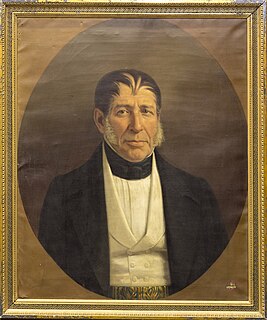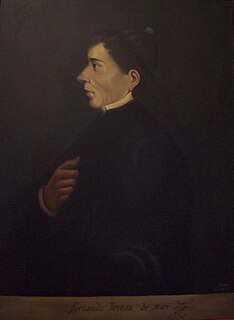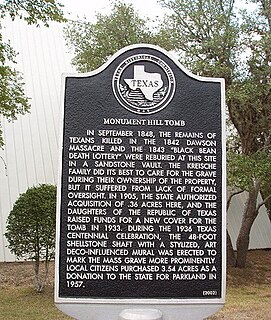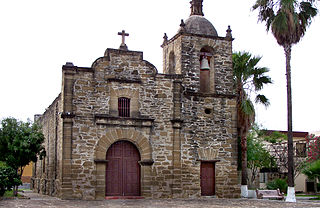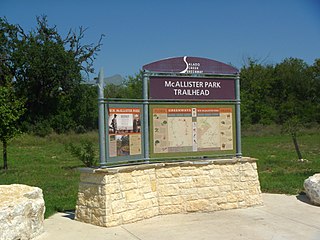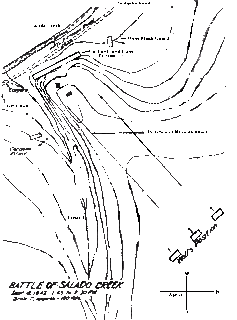
The San Carlos Fortress (in Spanish: Fortaleza de San Carlos) is an 18th-century fortress in the city of Perote, in the Mexican state of Veracruz. It is also known as the Fort of San Carlos, Perote Castle, the Castle of San Carlos, Perote Prison, San Carlos de Perote Fortress, and San Carlos de Perote Castle.

A fortification is a military construction or building designed for the defense of territories in warfare, and is also used to solidify rule in a region during peacetime. The term is derived from the Latin fortis ("strong") and facere.
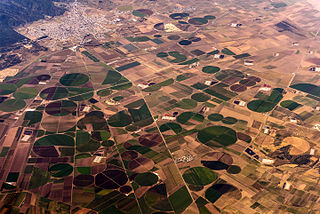
Perote is a city and municipality in the Mexican state of Veracruz. It serves as the seat of government for the surrounding municipality of the same name, which borders on Las Vigas de Ramírez, Acajete, Xico and Tlalnelhuayocan, and the state of Puebla. It is on Federal Highway 140.

Mexico, officially the United Mexican States, is a country in the southern portion of North America. It is bordered to the north by the United States; to the south and west by the Pacific Ocean; to the southeast by Guatemala, Belize, and the Caribbean Sea; and to the east by the Gulf of Mexico. Covering almost 2,000,000 square kilometers (770,000 sq mi), the nation is the fourth largest country in the Americas by total area and the 13th largest independent state in the world. With an estimated population of over 129 million people, Mexico is the tenth most populous country and the most populous Spanish-speaking country in the world, while being the second most populous nation in Latin America after Brazil. Mexico is a federation comprising 31 states plus Mexico City (CDMX), which is the capital city and its most populous city. Other metropolises in the country include Guadalajara, Monterrey, Puebla, Toluca, Tijuana, and León.
The fortress was built from 1770 to 1776 by Manuel de Santisteban as a guard post and repository for treasure prior to shipment to Spain. [1] After the Mexican War of Independence, the remaining Spanish colonial troops were garrisoned in the neighboring castle of San Juan de Ulúa, prompting General Guadalupe Victoria to create, on 11 October 1823, the first military college in the new country: the Perote Military College. [2]

The overseas expansion under the Crown of Castile was initiated under the royal authority and first accomplished by the Spanish conquistadors. The Americas were incorporated into the Spanish Empire, with the exception of Brazil, Canada, the eastern United States and several other small countries in South America and The Caribbean. The crown created civil and religious structures to administer the region. The motivations for colonial expansion were trade and the spread of the Catholic faith through indigenous conversions.
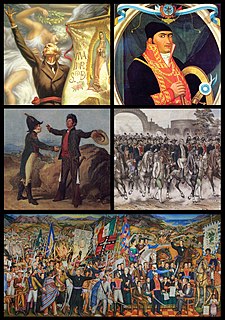
The Mexican War of Independence was an armed conflict, lasting over a decade, which had several distinct phases and took place in different regions of the Spanish colony of New Spain. Events in Spain itself had a direct impact on the outbreak of the insurgency in 1810 and in the alliance of insurgent leader Vicente Guerrero and royalist-officer-turned insurgent Agustín de Iturbide in 1821, which brought about independence. Napoleon Bonaparte's invasion of Spain in 1808 touched off a crisis of legitimacy of crown rule, since he had placed his brother Joseph on the Spanish throne after forcing the abdication of the Spanish monarch Charles IV. In many of Spain's overseas possessions the local response was to set up juntas ruling in the name of the Bourbon monarchy. In New Spain, however, peninsular-born Spaniards overthrew the rule of Viceroy José de Iturrigaray (1803–08). In 1810, a few American-born Spaniards in favor of independence began plotting an uprising against Spanish rule. It occurred when the parish priest of the village of Dolores, Miguel Hidalgo y Costilla, issued the Cry of Dolores on September 16, 1810. The Hidalgo Revolt touched off the armed insurgency for independence, lasting until 1821. The colonial regime did not expect the size and duration of the insurgency, which spread from the Bajío region north of Mexico City to the Pacific and Gulf Coasts. In 1820 when Spanish liberals overthrew the autocratic rule of Ferdinand VII and arch-conservatives in New Spain saw independence as a way to maintain their position, former royalists and old insurgents formed an alliance under the Plan of Iguala and forged the Army of the Three Guarantees. The momentum of independence saw the collapse of royal government in Mexico and the Treaty of Córdoba ended the conflict.

San Juan de Ulúa, also known as Castle of San Juan de Ulúa, is a large complex of fortresses, prisons and one former palace on an island of the same name in the Gulf of Mexico overlooking the seaport of Veracruz, Mexico. Juan de Grijalva's 1518 expedition named the island. On Easter Sunday 1519, Hernan Cortés met with Tendile and Pitalpitoque, emissaries from Moctezuma II's Aztec Empire.
Between 1841 and 1844, soldiers from the Republic of Texas, survivors of the Texan Santa Fe Expedition, the Dawson Massacre, and the Mier Expedition, were imprisoned here. 300 or so members of the failed Santa Fe expedition were held in the fortress during the winter of 1841–42. Then in December 1842, about fifty men who had been captured in San Antonio by General Adrián Woll, including fifteen from Dawson's company, were confined. The following year, approximately 160 survivors of the 1842–43 Mier Expedition, an offshoot of the Somervell Expedition, after being used through the summer as laborers to work on roads near Mexico City, were taken to the Perote Prison in September 1843. The last of all these Texan prisoners, numbering by then about 105, were not released until a year later, in September 1844. Many had died from wounds, disease, or starvation; and several prisoners had managed to escape, or were released earlier in response to U.S. diplomatic efforts.) [3] [4] [5]

The Republic of Texas was a sovereign state in North America that existed from March 2, 1836, to February 19, 1846. It was bordered by Mexico to the west and southwest, the Gulf of Mexico to the southeast, the two U.S. states of Louisiana and Arkansas to the east and northeast, and United States territories encompassing parts of the current U.S. states of Oklahoma, Kansas, Colorado, Wyoming, and New Mexico to the north and west. The citizens of the republic were known as Texians.

The Texan Santa Fe Expedition was a commercial and military expedition to secure the Republic of Texas's claims to parts of Northern New Mexico for Texas in 1841. The expedition was unofficially initiated by the then President of Texas, Mirabeau B. Lamar, in an attempt to gain control over the lucrative Santa Fe Trail and further develop the trade links between Texas and New Mexico. The initiative was a major component of Lamar's ambitious plan to turn the fledgling republic into a continental power, which the President believed had to be achieved as quickly as possible to stave off the growing movement demanding the annexation of Texas to the United States. Lamar's administration had already started courting the New Mexicans, sending out a commissioner in 1840, and many Texans thought that they might be favorable to the idea of joining the Republic of Texas.

San Antonio, officially the City of San Antonio, is the seventh-most populous city in the United States, and the second-most populous city in both Texas and the Southern United States, with more than 1.5 million residents. Founded as a Spanish mission and colonial outpost in 1718, the city became the first chartered civil settlement in present-day Texas in 1731. The area was still part of the Spanish Empire, and later of the Mexican Republic. It is the state's oldest municipality, having celebrated its 300th anniversary on May 1, 2018.
In March 1843, Guadalupe Victoria, who had served as Mexico's first President in the 1820s, died in the San Carlos Fortress complex. He suffered from epilepsy and was receiving medical treatment in Perote.
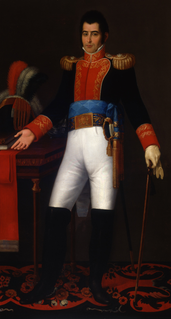
Guadalupe Victoria, born José Miguel Ramón Adaucto Fernández y Félix, was a Mexican general and political leader who fought for independence against the Spanish Empire in the Mexican War of Independence. He was a deputy in the Mexican Chamber of Deputies for Durango and a member of the Supreme Executive Power following the downfall of the First Mexican Empire. After the adoption of the Constitution of 1824, Victoria was elected as the first President of the United Mexican States.
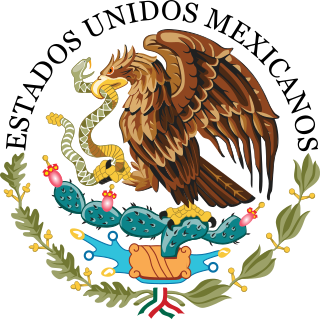
The president of Mexico, officially known as the president of the United Mexican States, is the head of state and head of government of Mexico. Under the Constitution, the president is also the Supreme Commander of the Mexican Armed Forces. The current president is Andrés Manuel López Obrador, who took office on 1 December 2018.

Epilepsy is a group of neurological disorders characterized by recurrent epileptic seizures. Epileptic seizures are episodes that can vary from brief and nearly undetectable periods to long periods of vigorous shaking. These episodes can result in physical injuries, including occasionally broken bones. In epilepsy, seizures have a tendency to recur and, as a rule, have no immediate underlying cause. Isolated seizures that are provoked by a specific cause such as poisoning are not deemed to represent epilepsy. People with epilepsy may be treated differently in various areas of the world and experience varying degrees of social stigma due to their condition.
During the Mexican–American War of 1846–48, American forces captured the fortress on April 22, 1847. They garrisoned it as a post to protect their line of communications between Veracruz and Mexico City from guerrillas.

The Mexican–American War, also known in the United States as the Mexican War and in Mexico as the Intervención Estadounidense en México, was an armed conflict between the United States and Mexico from 1846 to 1848. It followed in the wake of the 1845 U.S. annexation of Texas, which was not formally recognized by the Mexican government, who disputed the Treaties of Velasco signed by Mexican caudillo President/General Antonio López de Santa Anna after the Texas Revolution a decade earlier. In 1845, newly elected U.S. President James K. Polk, who saw the annexation of Texas as the first step towards a further expansion of the United States, sent troops to the disputed area and a diplomatic mission to Mexico. After Mexican forces attacked U.S. forces, the United States Congress declared war.
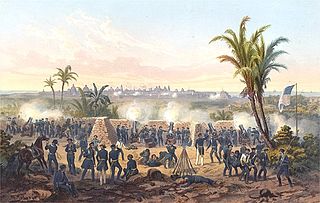
The Battle of Veracruz was a 20-day siege of the key Mexican beachhead seaport of Veracruz, during the Mexican–American War. Lasting from March 9–29, 1847, it began with the first large-scale amphibious assault conducted by United States military forces, and ended with the surrender and occupation of the city. U.S. forces then marched inland to Mexico City.

Guerrilla warfare is a form of irregular warfare in which small groups of combatants, such as paramilitary personnel, armed civilians, or irregulars, use military tactics including ambushes, sabotage, raids, petty warfare, hit-and-run tactics, and mobility, to fight a larger and less-mobile traditional military. Guerrilla groups are a type of violent non-state actor.
At the very end of the Second World War, after Mexico declared war against the Axis alliance, the facility served as a prison for German and Italian citizens. [6]

World War II, also known as the Second World War, was a global war that lasted from 1939 to 1945. The vast majority of the world's countries—including all the great powers—eventually formed two opposing military alliances: the Allies and the Axis. A state of total war emerged, directly involving more than 100 million people from more than 30 countries. The major participants threw their entire economic, industrial, and scientific capabilities behind the war effort, blurring the distinction between civilian and military resources. World War II was the deadliest conflict in human history, marked by 70 to 85 million fatalities, most of whom were civilians in the Soviet Union and China. It included massacres, the genocide of the Holocaust, strategic bombing, premeditated death from starvation and disease, and the only use of nuclear weapons in war.

The Axis powers, also known as "Rome–Berlin–Tokyo Axis", were the nations that fought in World War II against the Allies. The Axis powers agreed on their opposition to the Allies, but did not completely coordinate their activity.
Then the fortress became a state prison, from 1949 to March 2007, [6] after which it was opened to the public.


